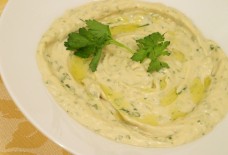A Camel Encounter Makes the Trip to Dubai's Mountain Resort Worthwhile
By: Habeeb Salloum/Arab America Contributing Writer
The night rains had freshened the air and now as with my daughter and late wife, I drove southward from Dubai, the economic heart of the United Arab Emirates. Our goal was Hatta, Dubai’s mountain resort on the border of Oman. Glancing back, I saw the sky-reaching structures of the city, glimmering in the morning sun, imbuing them with a magic aura. They were a reflection of a modern fantasy city that had risen from barren land. Today, we would exchange this world of 21st-century splendor for the mountain air of Hatta – Dubai’s number one natural resort.
It was hard to leave this fairyland urban center, which only a few decades ago was a tiny coastal town surrounded on three sides by desert sand. It was as if Aladdin with his magic lamp had created in this short span of time a grand metropolis vying in its splendor with the top cities of the world. Its 21st-century edifices, in the hundreds, tell better than in words the story of that magnificent city, now fading into the distance.
Soon we were speeding along a super four-lane highway heading toward Al Ain, the oasis garden city in the United Arab Emirates. The thick shrubs and trees lining both sides of the expressway shut out the surrounding desert. Some four years back I had driven along the same road and for most of the way the sands edged the paved highway. This day it was a different story. Greenness was all-encompassing. We rarely glimpsed the sands beyond except where there was the odd opening in the shrubs and trees.
In about 20 minutes after leaving the city of Dubai, we turned on the road to Hatta – another four-lane highway but sans the greenery. Now the sand dunes, some green with desert shrubs, were clearly visible. As we drove along, the sand gradually turned to a reddish shade. I was engrossed with the pristine sand dunes when I heard my daughter shout out, “ Look! Camels! Camels are crossing the highway!”
A few minutes later, I thought that we were in a traffic jam. Like all the other drivers ahead and behind us, I stopped the car to watch a camel herd slowing, without a care in the world, cross the road. It was a serene scene – the old and the new intermingling. The sea of reddish clean sand in the background, the camels in single file, and the long line of autos made for an enchanting picture postcard.
I looked around me and breathed in deeply the March air, feeling exhilarated. Standing beside me, my daughter entranced with so-called ‘ships of the desert’, as she prepared to take their pictures, commented, “They’re cute but ugly!” Not to be left out, her mother cooed, “Oh! They’re so cute!”, as a mother and her baby camel slowly made their way to the other side of the road.
What seemed strange however was how the Emirati young men, usually dangerous tigers behind the wheel, terrorizing other drivers on the road with their land cruisers, stopped and waited patiently to let the camels pass. Some even stood in front of the first row of autos in order to make sure the camels made a safe crossing. The animal that had a great hand in the survival of their ancestors was still commanding respect by the younger crowd who now lived amid the most modern gadgets of the 21st century.
Back on the road again, we could make out on the horizon of the outline of the Omani Hajjar Mountains. A short distance further on, the desert began to fade away to be replaced by small hamlets and homes dotting the countryside. A short time later and after a little more than an hour’s drive, we entered Hatta, the Emirate of Dubai’s only mountain resort and one of the most ancient towns in the Emirate of Dubai.
Situated 115 km (71.5 mi) southeast of the city of Dubai, the 200-year old village of Hatta is hugged by the rugged beauty of the Hajjar Mountains, with some greenery clinging to a precarious existence and tiny cultivated plots of land with their stone houses. In these mountains are also found hidden waterfalls and refreshing pools of pure mountain water, providing an idyllic location for a picnic or, after a desert trip, a bathing place in the refreshing waters.
For travelers, the most important site in Hatta is the Heritage Village, which helps visitors discover the charm of Dubai’s yesteryears. It is distinguished by its fortified buildings and has about 30 houses, which have been fully restored. They all house mementos from the bygone years and offer visitors a fascinating glimpse into that city’s historic past.
Signs in Arabic and English guide visitors to various sections of the site which includes a 200-year-old mosque, barasti (palm leaves) and mud houses, a majlis (meeting place), and a large central fort and tower, which overlooks the village. Further up the hillside, two restored towers that were once used as defense fortresses, give the area a medieval aura.
When we finished touring the Heritage Village, we explored the remainder of Hatta with its many eye-catching newly constructed structures then ended our tour at the Hatta Fort Hotel on the edge of town. Here, as we sipped on our Turkish coffee, I reminisced about booming Dubai with its mass of skyscrapers, the beloved and respected camels, and the mountain resort of Hatta, set in a lunar landscape of barren rocky mountains. It was a day of contradicting worlds – from the modern 21st century to the preserved historic past.









